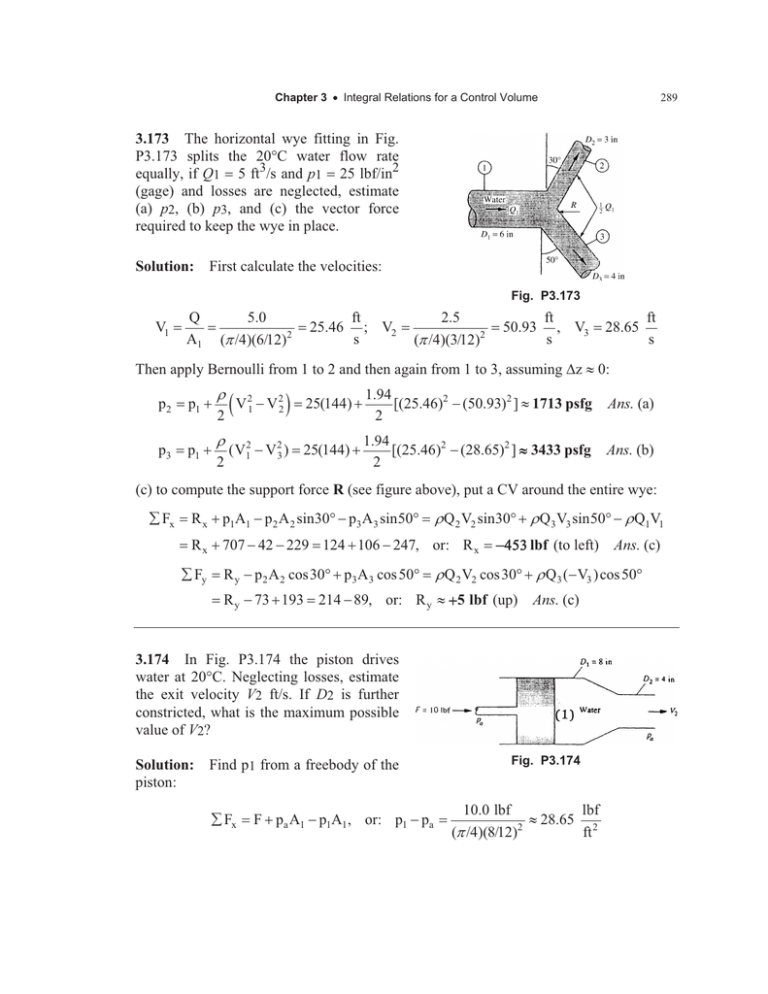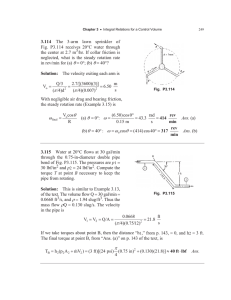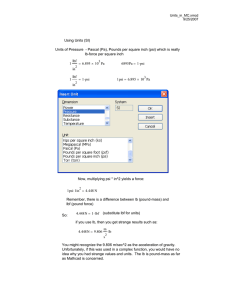P3.173 splits the 20°C water flow rate 5 ft 25 lbf/in
advertisement

Chapter 3 x Integral Relations for a Control Volume 289 3.173 The horizontal wye fitting in Fig. P3.173 splits the 20°C water flow rate equally, if Q1 5 ft3/s and p1 25 lbf/in2 (gage) and losses are neglected, estimate (a) p2, (b) p3, and (c) the vector force required to keep the wye in place. Solution: First calculate the velocities: Fig. P3.173 V1 Q A1 5.0 (S /4)(6/12)2 25.46 ft ; V2 s 2.5 (S /4)(3/12)2 50.93 ft , V3 s 28.65 ft s Then apply Bernoulli from 1 to 2 and then again from 1 to 3, assuming 'z | 0: p2 p1 p3 p1 U V 2 U 2 25(144) 1.94 [(25.46)2 (50.93)2 ] | 1713 psfg 2 Ans. (a) (V12 V 23 ) 25(144) 1.94 [(25.46)2 (28.65)2 ] | 3433 psfg 2 Ans. (b) 2 1 V 22 (c) to compute the support force R (see figure above), put a CV around the entire wye: ¦ Fx R x p1A1 p2 A 2 sin30q p3 A 3 sin50q U Q 2 V2 sin30q U Q 3 V3 sin50q U Q1V1 R x 707 42 229 124 106 247, or: R x ¦ Fy R y p2 A 2 cos30q p3 A3 cos 50q lbf (to left) Ans. (c) U Q 2 V2 cos30q U Q3 ( V3 ) cos 50q R y 73 193 214 89, or: R y | 5 lbf (up) Ans. (c) 3.174 In Fig. P3.174 the piston drives water at 20°C. Neglecting losses, estimate the exit velocity V2 ft/s. If D2 is further constricted, what is the maximum possible value of V2? Solution: Find p1 from a freebody of the piston: ¦ Fx F pa A1 p1A1 , or: p1 pa Fig. P3.174 10.0 lbf lbf | 28.65 2 2 (S /4)(8/12) ft











